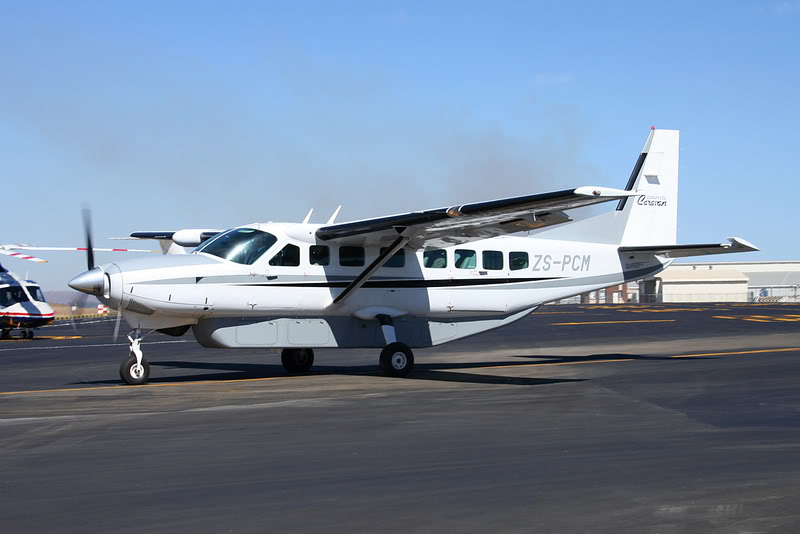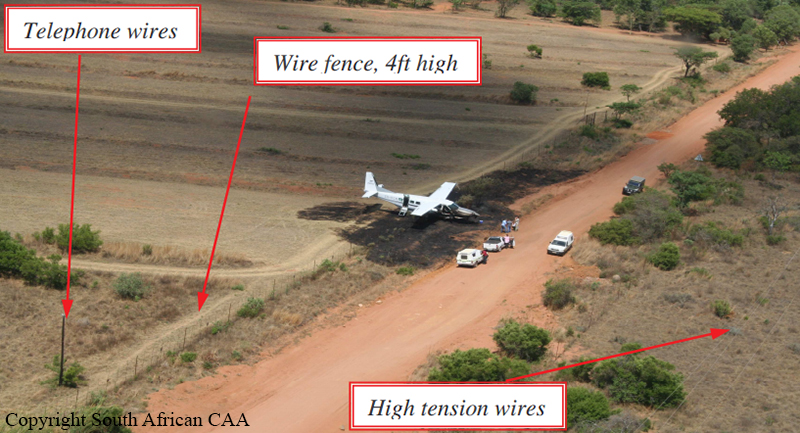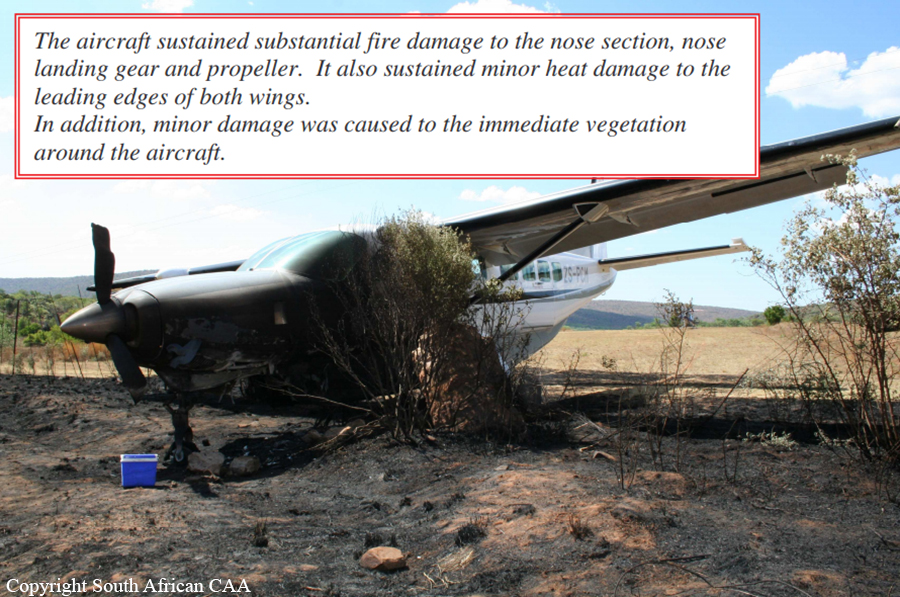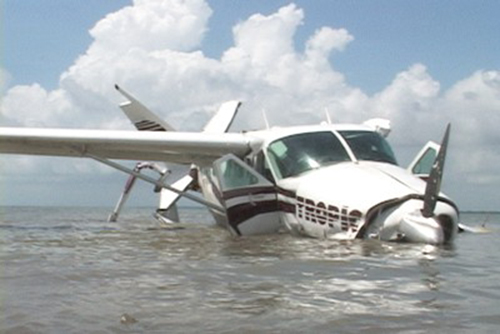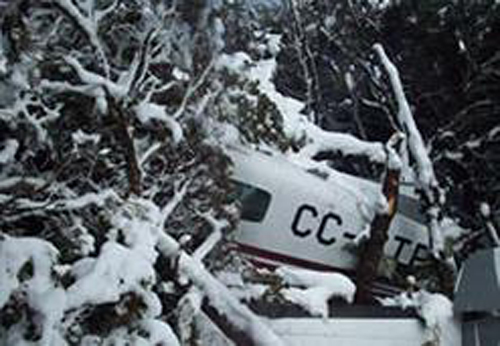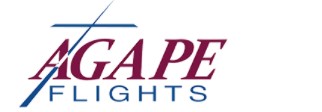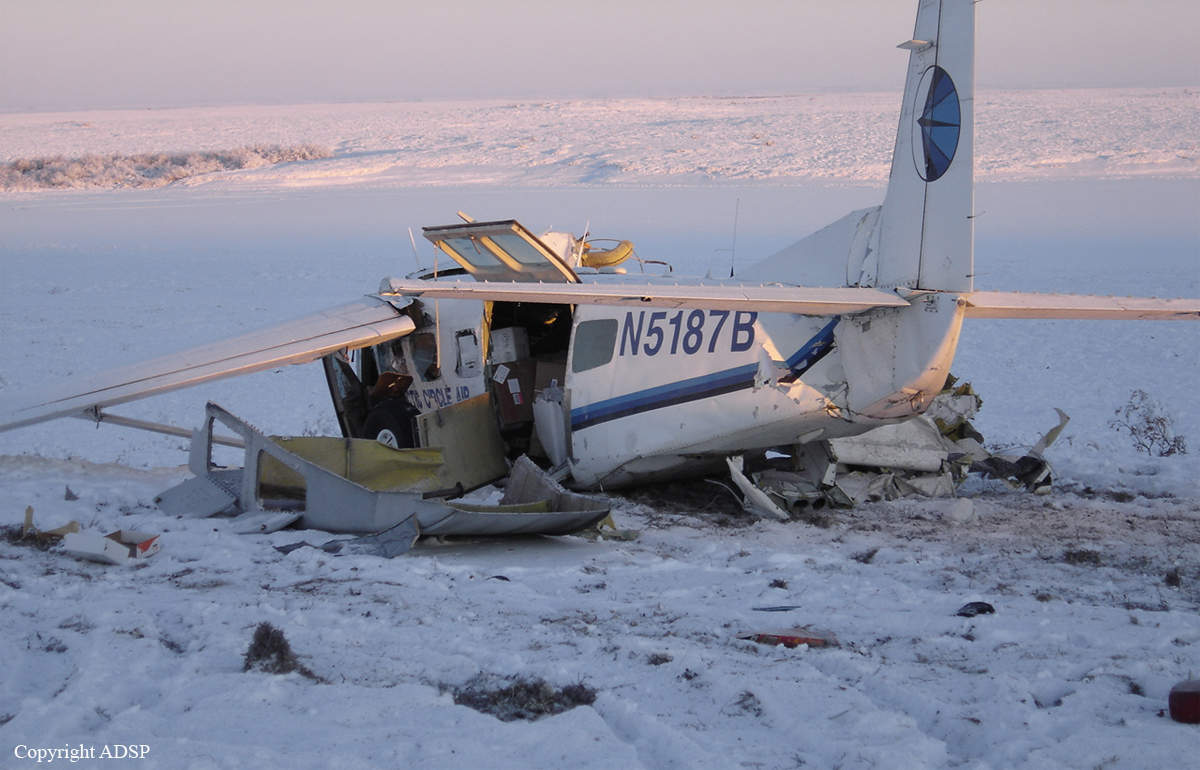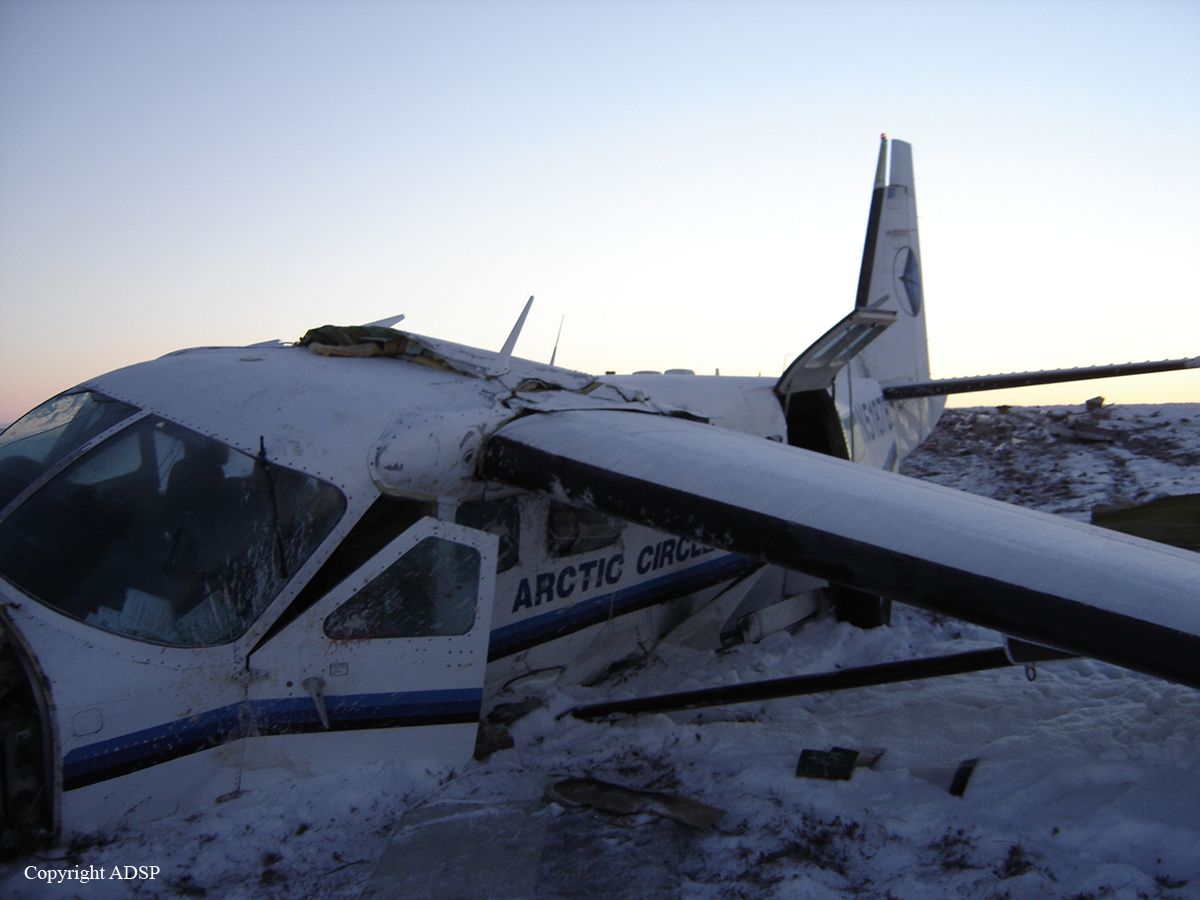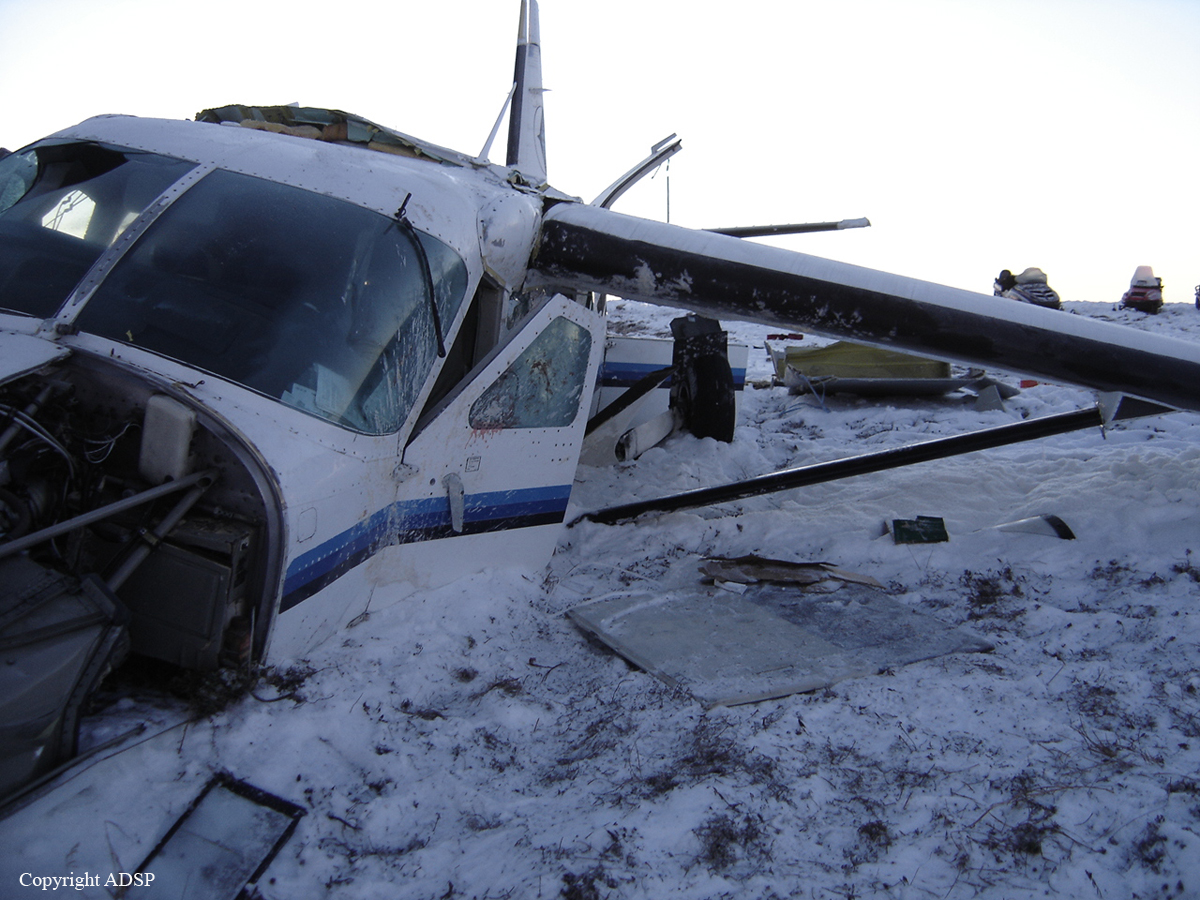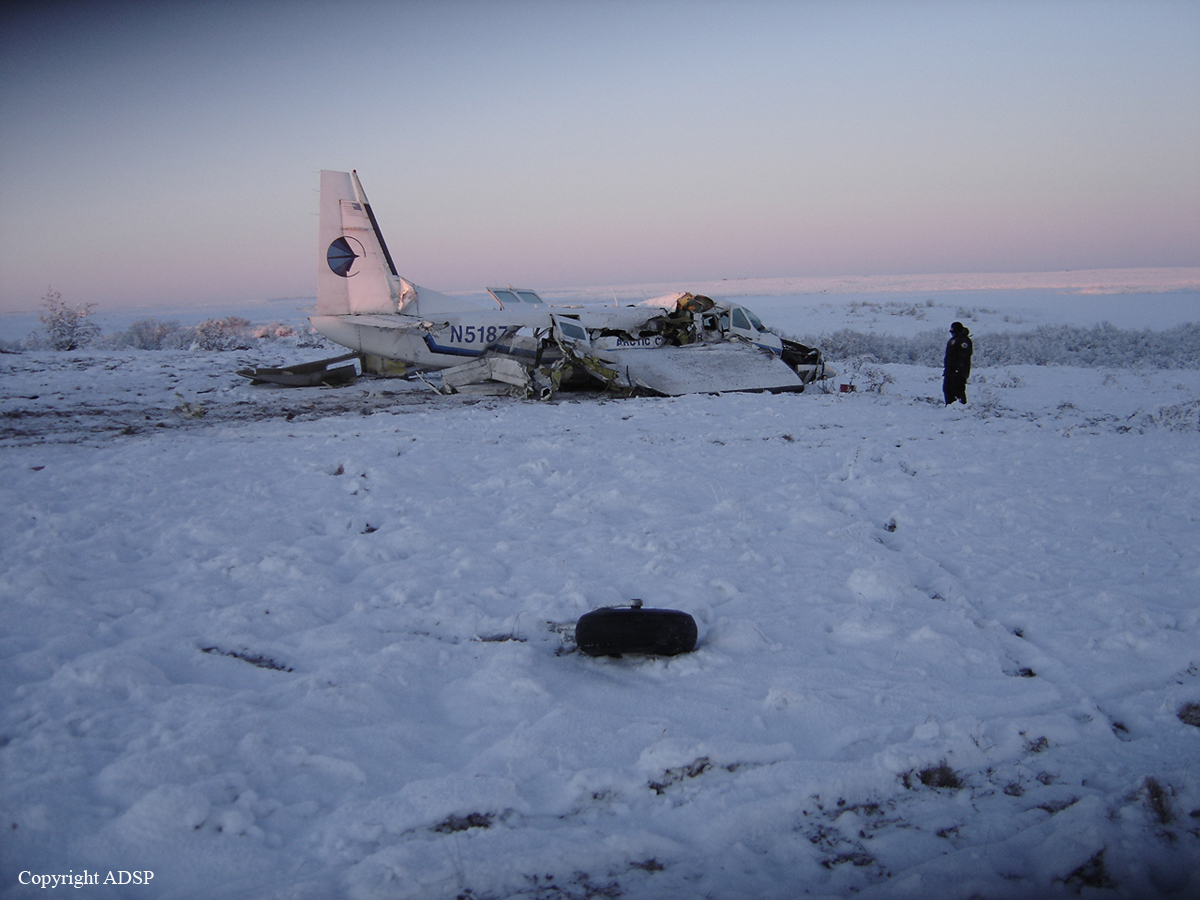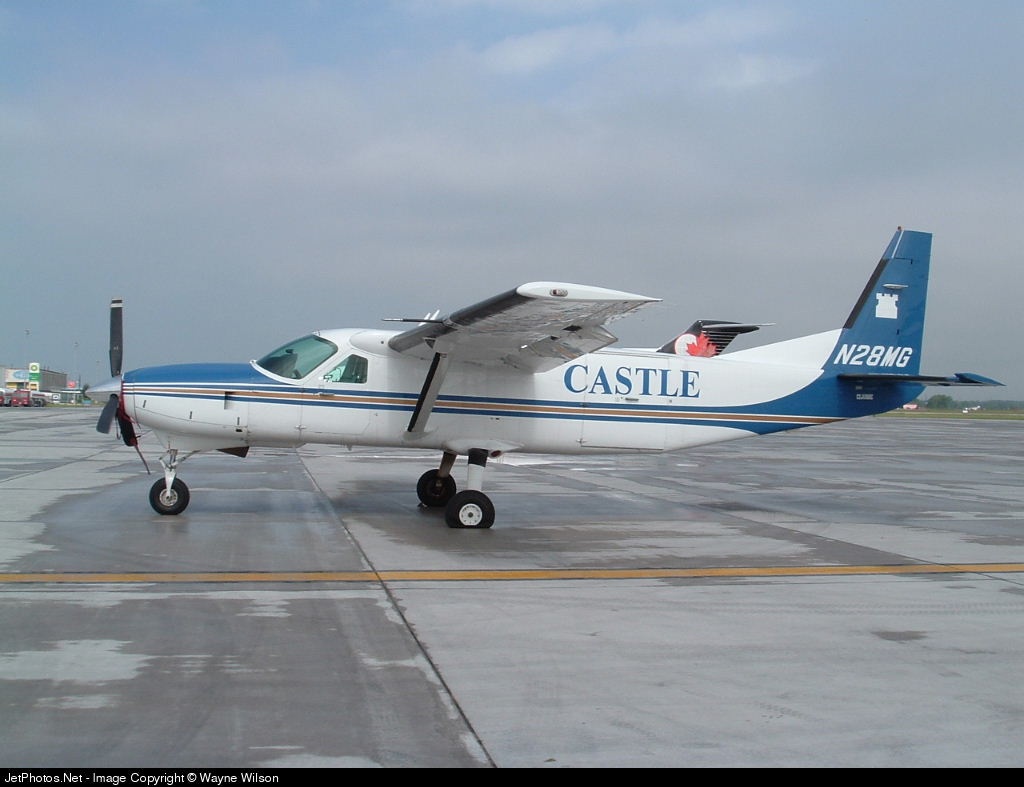Crash of a Cessna 208B Grand Caravan in Nyala Lodge
Date & Time:
Nov 1, 2008 at 1100 LT
Registration:
ZS-PCM
Survivors:
Yes
Schedule:
Pretoria - Nyala Lodge
MSN:
208B-0851
YOM:
2000
Crew on board:
1
Crew fatalities:
Pax on board:
5
Pax fatalities:
Other fatalities:
Total fatalities:
0
Captain / Total hours on type:
390.00
Aircraft flight hours:
2659
Circumstances:
On 1 November 2008 the pilot, accompanied by 5 passengers, departed from Wonderboom aerodrome to Njala Lodge in the Limpopo Province on a chartered flight. The coordinates used by the pilot were insufficient for the purpose and resulted in him landing on an incorrect aerodrome. During the take-off from the incorrect runway, the pilot apparently failed to do a proper assessment of the wind conditions and the result was an aborted take-off as the aircraft failed to gain height. During the landing following the aborted take-off, the aircraft collided with a huge rock, a telephone pole and the associated telephone wires and a 4 ft wire fence. The aircraft sustained substantial damage during the accident sequence and stopped a mere 5 metres from high tension wires across the dirt road.
Probable cause:
The pilot failed to carry out a proper assessment of the wind conditions. The aircraft failed to gain height as a result of a possible down draft and collided with obstacles on the ground after landing. The pilot failed to maintain directional control after take-off, resulting in a landing on the left side of the runway after aborting the take-off.
Final Report:
